When most people think of Austin, ghosts probably aren’t the first thing that comes to mind. Tacos? Sure. Live music? Absolutely. Tech bros on scooters? Unfortunately, yes. But spirits of the dearly departed? Not so much.
Still, for a “young” city that’s barely pushing 186 years, Austin manages to pack in more than a few bone-chilling haunts. Most people know about the Driskill Hotel already– which, alone, could fill a season of Ghost Hunters.
But according to Kevin Miller, a former Austin Ghost Tours guide, history buff, and general collector of eerie tales, those are just the headliners. In his four years leading curious Austinites and wide-eyed tourists around town, Miller uncovered a whole lineup of lesser-known spots that locals walk past every day without realizing they’re brushing shoulders with history’s more permanent residents.
Here are some of the spookiest stories that stuck with him.
North Evans House
708 San Antonio Street
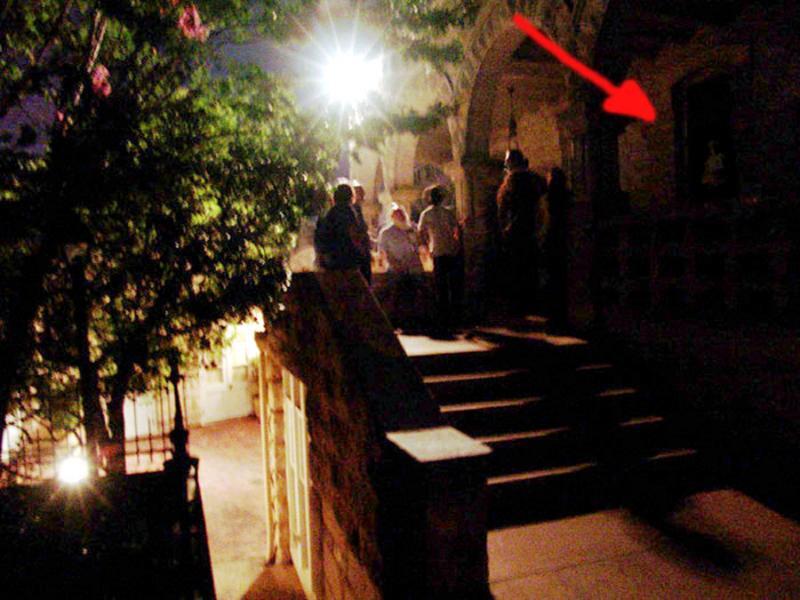 North Evans House during Miller’s tour. Photo courtesy Kevin Miller.
North Evans House during Miller’s tour. Photo courtesy Kevin Miller.
Built in 1874, this mansion has gone by many names: North Evans House, Chateau Bellevue, and today, the Austin Woman’s Club. It was quickly sold for half its construction cost, and while historians chalk it up to financial trouble, Miller tells a darker tale.
“They had several sons and one daughter named Athalie North, who was known to be gifted at music,” he says. Athalie died while traveling home from Europe, and ever since, piano music has reportedly drifted from the house when it’s empty.
“I would tell this story on my tours, and the interesting thing is people would come up to me and say, ‘Before you started talking, I heard piano music from inside the house.’”
Once, while guiding a group of Austin photographers, Miller stood on the front steps of the building, telling the story of Athalie and the piano music as he usually did. The group took some photos; they moved on.
The next day, Miller got an email from one of the participants. It was a photo of the group– Miller standing on the porch telling his story—and seemingly, a young girl staring out the window behind him.
“I’m a very skeptical person,” says Miller, “But once I already had four different stories of people hearing piano music and then I got this photo… I definitely got the creeps from then on.”
Thomas Wooten Building
109 East 10th Street
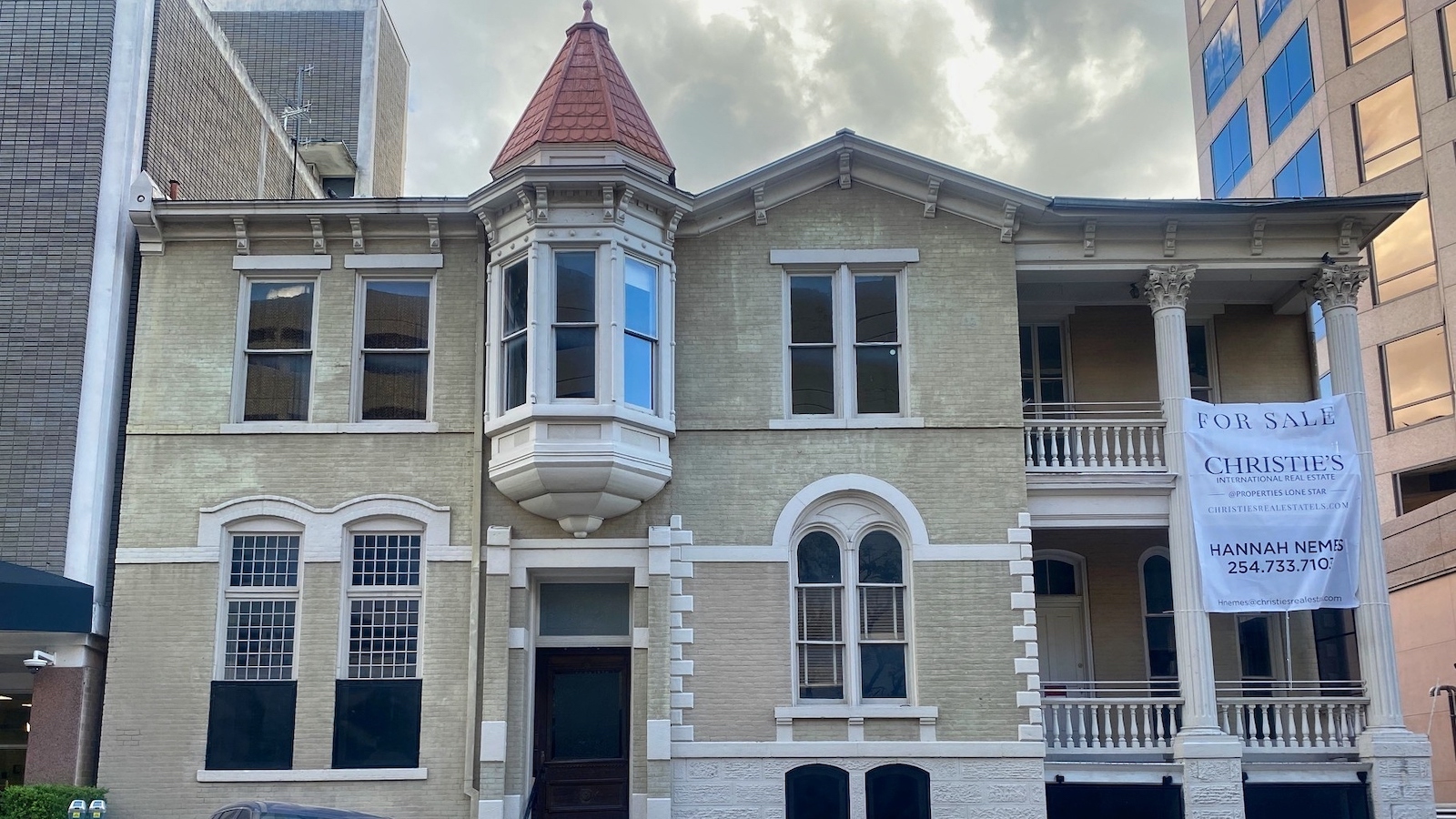 The Thomas Wooten Building. Photo by Natalie Grigson.
The Thomas Wooten Building. Photo by Natalie Grigson.
Built in 1876 by Dr. Thomas Dudley Wooten, this building originally functioned as a private hospital. While it lacks a single tragic legend, Miller points out that hospitals are, by nature, places where suffering and death linger.
Around 2004, the building was being used to office an early dot-com startup, and one of the co-owners of the business was staying there with her son during a home renovation.
“She told me that she woke up in the middle of the night to the sound of a heavy gust of wind. She heard her son yelp from the next room, and she got up and ran in there. And in that room, everything was being blown about, like, some invisible tornado,” Miller says.
Then, the son looked at her and said, “The boss is here,” before the wind died down.
Miller guided groups of people to this location for years and after some time, he was permitted to take guests into the building and tell the story from there. As he turned the key to go inside one night, it snapped in the lock.
So, he was forced to tell the story from outside the building, rather embarrassed. Later that night, he returned to figure out the key situation, assuming he’d have to call a locksmith to pry the broken half of the key out. But he soon realized the broken part of the key was not in the lock at all. Instead, it was laying perfectly placed in the middle of the doorstep, right at the base of the door.
“I’ve broken a key off in a lock before and almost by definition, it’s getting stuck in there,” he says. “And to find that it had not only fallen out, but fallen out sideways and came to rest so perfectly seemed a little spooky given what I already knew about the place.”
The Fourth Floor of the Capitol Building
1100 Congress Ave.
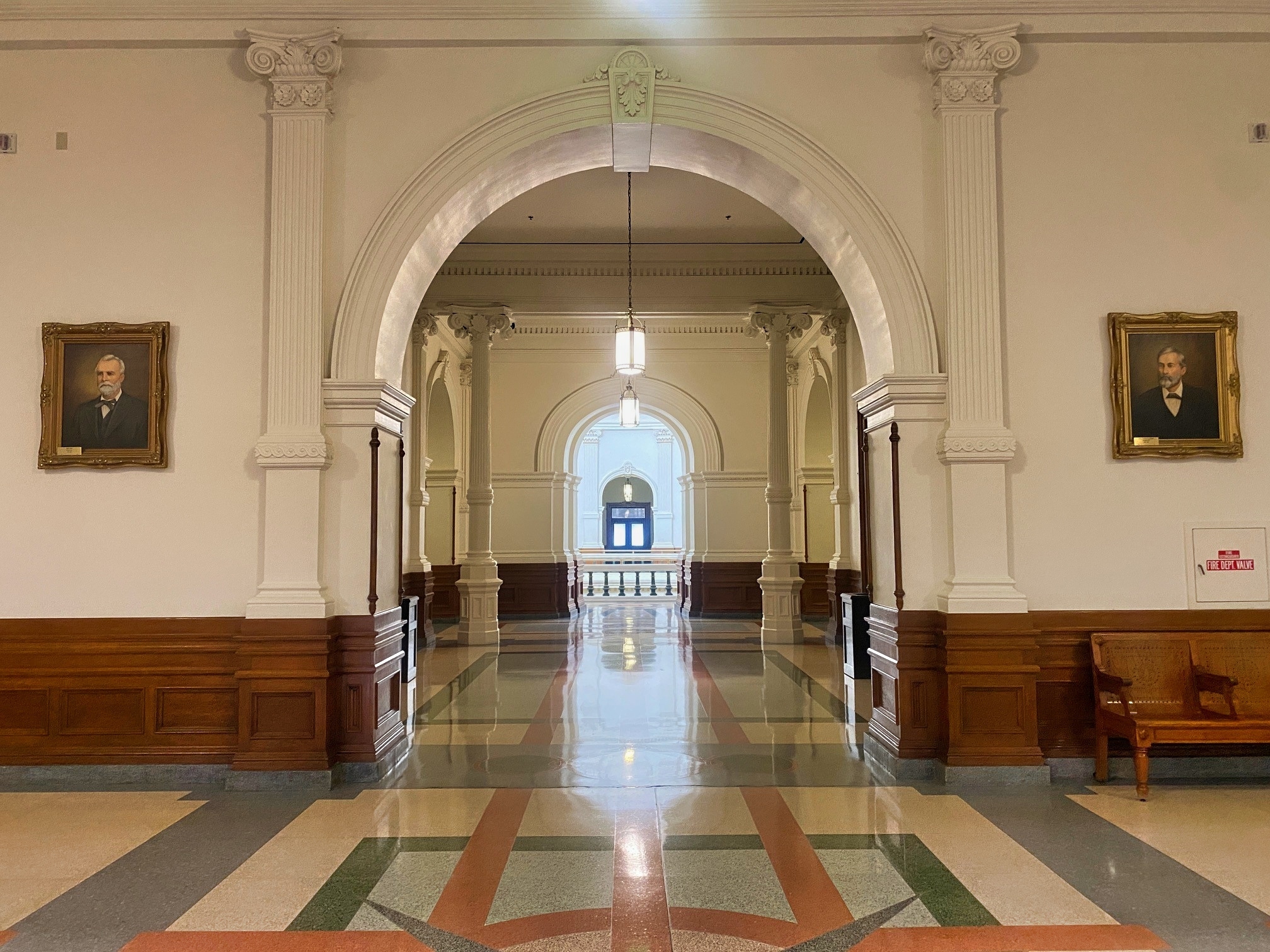 The four floor of the Texas Capitol. Photo by Natalie Grigson.
The four floor of the Texas Capitol. Photo by Natalie Grigson.
The Texas State Capitol has its fair share of legends, but one of the most famous has nothing to do with politics.
“So many ghosts are said to be wearing white dresses,” says Miller. “But this is a story about a ghost wearing a red dress seen on the north side of the fourth floor in the Capitol.”
The woman in red is said to pace the floor, appearing lost or restless. Rumor has it she was in love with a legislator who never returned her affection. While the backstory is unverified, eyewitness accounts are not.
One evening, as Miller’s group walked onto the grounds, a trooper at the gate leaned out of his car window.
“Ghost tours?” he asked.
“Yes.”
“I seen her,” he said. Apparently, the officer and his partner had both spotted a woman in a red Victorian dress before she vanished into thin air on the building’s fourth floor.
The Lieutenant Governor’s Apartment
1100 Congress Ave.
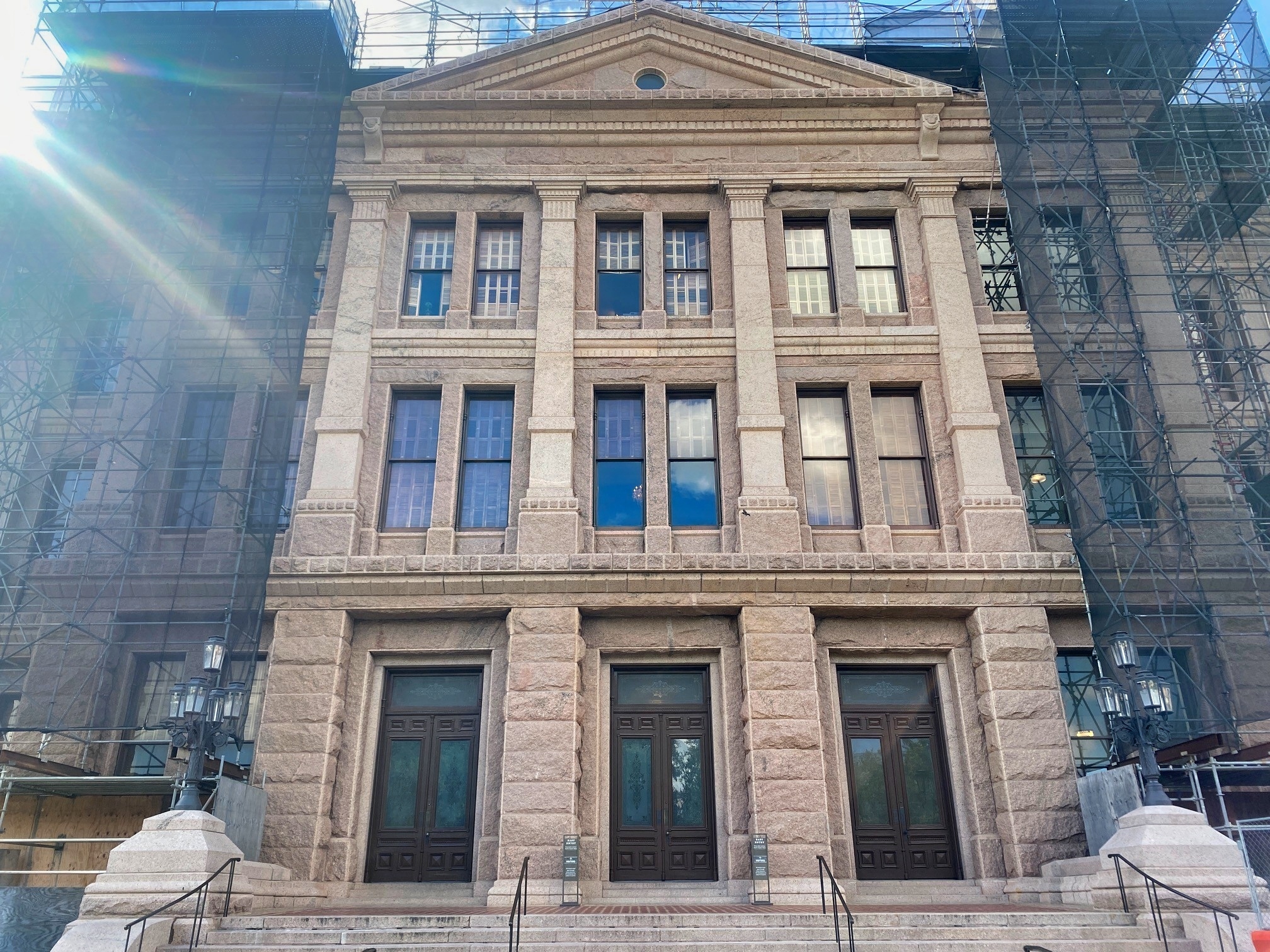 The east wing of the Capitol, which caught fire in 1983. Photo by Natalie Grigson.
The east wing of the Capitol, which caught fire in 1983. Photo by Natalie Grigson.
In 1983, then Lieutenant Governor of Texas, Bill Hobby, had an apartment on the east side of the Capitol building, which today are offices.
The news report at the time told this story: Bill Hobby’s youngest daughter, 18-year-old Kate Hobby, was asleep in the apartment with “some other guests” when an electrical fire broke out. Kate and two other guests were able to escape the blaze, but one guest, 23-year-old Matt Hansen, was trapped in a bedroom and died.
According to Miller, one version of the story suggests that Kate Hobby was having a little party at her dad’s apartment while he wasn’t there. After she and her friends wandered off to bed and around 5 AM, a fire broke out. Hansen was trapped in one of the rooms, says Miller, and he ran toward the nearest exterior window, banging on it with hopes of an escape, but the window was nailed shut.
“The story goes that people still occasionally find a pair of handprints in the glass in that room,” says Miller. “No matter how much they’re cleaned, the handprints will eventually reappear.”
The Paramount Theater
713 Congress Ave.
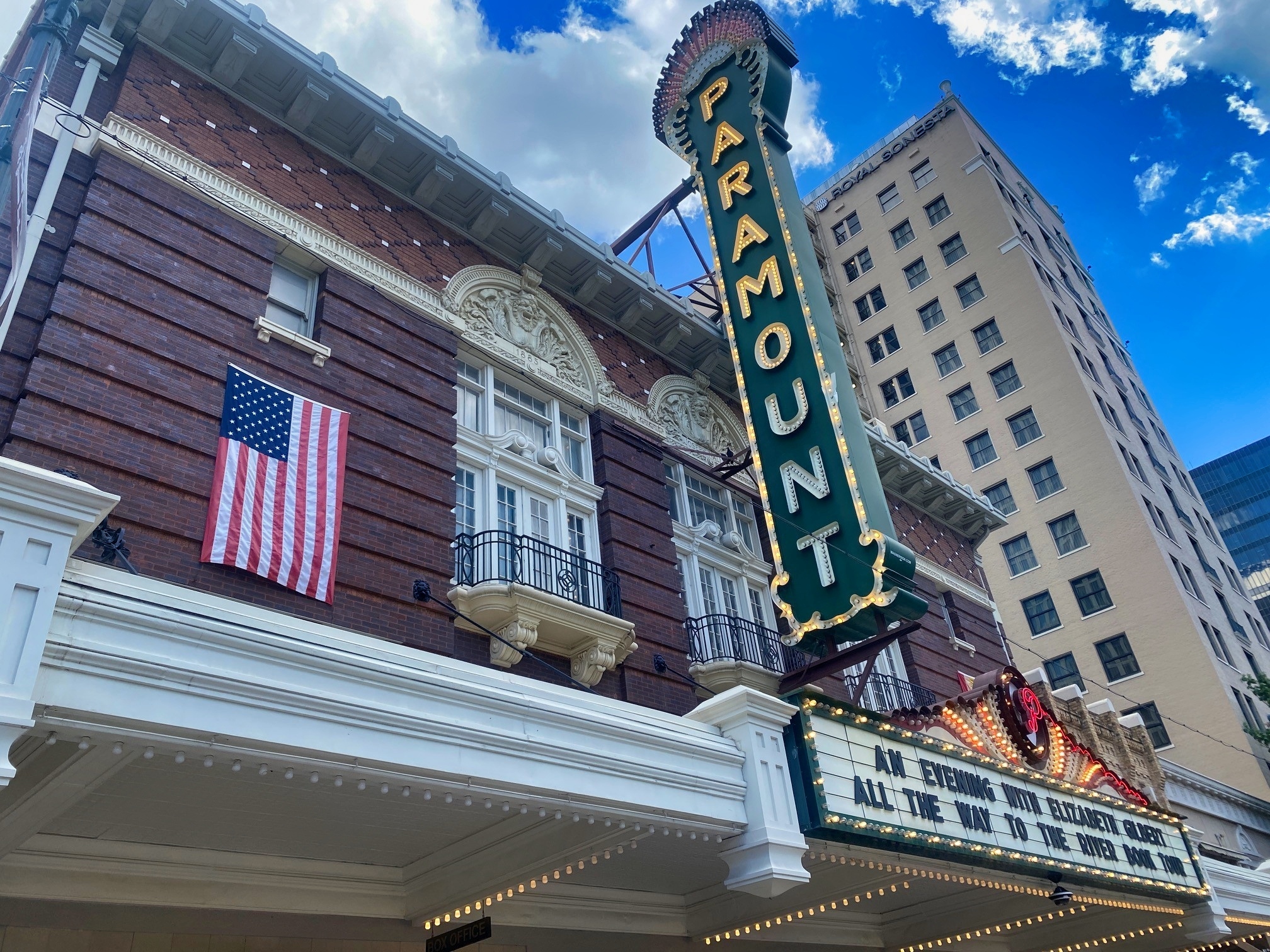 The Paramount Theatre. Photo by Natalie Grigson.
The Paramount Theatre. Photo by Natalie Grigson.
For anyone who has been inside the historic Paramount Theater, it’s probably not surprising that it holds a ghost story or two.
From the 1960s until 2000, Edgar Walter Norris, Jr. was The Paramount Theater’s projectionist, and notably, the first Black projectionist in Austin. In May of 2000, Norris was in the projection booth showing a screening of Casablanca, when he suddenly died. According to Miller, they were only aware something was wrong because the film’s reel flipped over.
Norris’s union hat and stagehand gloves, along with his picture, are still displayed in the projection booth in his memory; but Miller says that he lives on in other ways.
“Ever since he died, people in the projection booth and outside of the booth have had creepy experiences,” he says. Some of these experiences include footsteps when nobody is around, the feel of a hand on a shoulder, or things randomly moving on their own accord.
For a theater where illusion is part of the magic, Norris’ ghost may simply be continuing the show.
